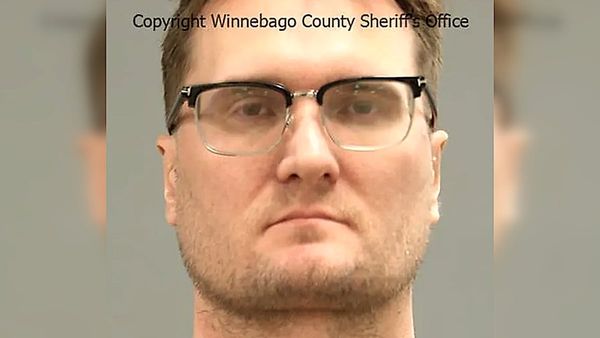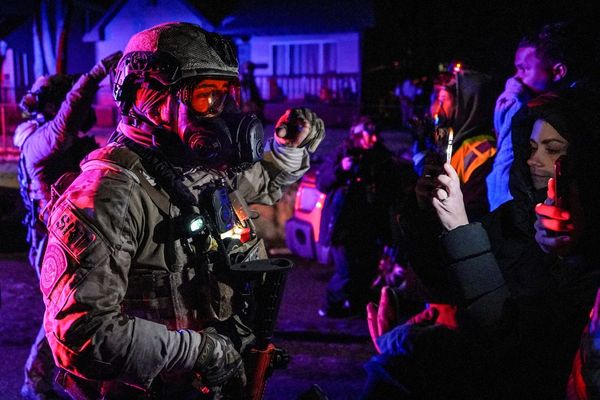
Last month Harold Franks, age 92, found himself at Newcastle's Digital Library because "they wanted volunteers, and I'm one to volunteer for anything".
He had heard they were looking to give a podcast, and he had no idea what they were talking about.
He is one of several participants who were brought in via a Creative Ageing project in partnership with the University of Newcastle and Newcastle Libraries. Participants learn about photography, podcasting and 3D printing via the equipment at the library which only opened in 2020.
"I can send and receive emails but I'm not real up on the computer system," Franks says. "I thought 'well, why not I've got a lot of stories to tell'. I lived in three states, over 100 countries. I've been retired; I'm in my 33rd year.".
Franks came in to tell the story of his Morse code machine, which he brought with him along with a scrapbook of telegram memories.
He still knows the obsolete language like the back of his hand. He operated Morse code machines in a post office in Sydney from 1951 to 1962. (The last telegram was sent by Morse code in 1962.)
When he started, he found it difficult to learn.
"It was first discovered in America in 1834, but we in Australia, we didn't connect to the world until 1897," Franks says. "I could say that it's like learning another language. It was used for quickness of news to get through celebration of wedding anniversaries. In my book I've got a telegram sent from the Queen to a couple celebrating their 60th wedding anniversary. Congratulatory lottery results were sent by Morse."

He remembers spending four-hour shifts on the line with Gloucester, Wingham and Dungog on one line, just sending telegrams.
"You had to be able to send Morse at least 32 words a minute to type as a telegrapher," he says.
Back in the day Franks did 75 words per minute, and he's pretty agile with the language for a nonagenarian.
He hasn't forgotten anything, and can still instantly type up the alphabet. He'll never forget; he says it's like riding a bicycle.
He thinks it's important to tell people about Morse code machines so they understand the part of life and communication that came before the modern technology we're so familiar with today.
He likes showing his machine to everyone, from kids in schools to folks in nursing homes.
University of Newcastle academics Andrew Howells and Keri Glastonbury and Alexandra Lewis were all at the workshops in June. They spoke about how the university wants to encourage creative aging: activities which give people longevity.
The academics are in disciplines that haven't traditionally worked together: Glastonbury and Lewis are in humanities and Howells is in creative industries.
"The three of us are the team who have designed and put it together and thought about the way we could associate the Copley collection," Lewis says.
They received a grant from Janet Copley Bequest to fund the workshops. Merv and Janet Copley were Novocastrian union activists and amateur historians with a large legacy. The University of Newcastle has 800 boxes of research collected and donated by the couple.
Glastonbury brought in some scrapbooks from the Copley collection as inspiration for the participants.
"We toured the Digital Library and thought, it doesn't look like there's much here. Then we got showed all of the technologies, and thought wow, 'there's so much to do here.' " Glastonbury says.
"Old people go to the library where there's books and we understand that. We could imagine they might feel alienated in a digital library."

They reached out to a lot of nearby seniors groups including those who lived nearby in the retirement village and brought them all in. A combination of library and university staff worked to document their objects.
Photographers Mel Muddle and Hannah Robinson also came in to help tell the story.
Glastonbury knew it would be hard to navigate the digital library if you were unfamiliar with the way the technology works, which is why personal objects were a good way to start.
"The beautiful thing about Harold here is he sat down and explained to a school group. He says 'you guys think you invented shorthand,' " Howells says.
"Part of it is demystifying an object going into the digital world. It's about demonstrating, having them bringing it in, capturing them and video work. They've done podcasts and journalling as well."
The workshops exemplified the many different ways to tell stories. They combined interesting obsolete and modern devices with a variety of documentation devices and passionate storytellers.
The library even pulled up a digital map drawn by illustrator Liz Anelli on the big screen which linked to historical photos of the suburbs. Now, workshop participants know how to pull it up when they come back to visit.
"Some of our participants might come back in with their children and grandchildren. They might also be excited to use the podcasting studio," Lewis says.

Sandra Keen, 77, came to the workshops after being invited by Computer Pals, of which she's a member. Ten years ago she retired as a primary school teacher.
"Today is exciting because there are so many things happening," she says.
She brought in a present from her 11th birthday, a Kodak Baby Brownie Camera, still in its original leather brown box, with instructions. It was given to by her uncle.
"It was very, you would call it primitive and unsophisticated," Keen says.
She went on to describe the arduous task of putting the (now obsolete) film in the camera and winding it without touching anything too much.
"When you finished you have about 12 or 15 shots. It was expensive for a kid. Then, you had to put the film into a silver-lined packet and take it along to a pharmacy, you wait several weeks," she says. "I think I was disappointed the first time I picked up the results, how small they were."
She still has original photos of her friends in Mayfield, her uncle and his FJ Holden, It's taken in the front of the garage at the house on 430 Maitland Road West.

She's excited to record the story of her camera because she thinks people need to know that photography didn't used to be instantaneous; there was a lot of setting up and thought.
Like cameras, the idea of women as photographers has advanced.
"When you think back 66 years ago, girls in the '50s were given dolls, embroidery kits, girly books. Things like that - yeah they're ok. Pajamas, dresses, something to wear," Keen says.
Her uncle had recently come back from war and hadn't married and had the foresight to give her something he thought she might actually enjoy and flourish with.
To this day she still enjoys photography, mainly with her iPhone and sometimes using her husband's SLR camera.
Franks, on the other hand still doesn't own a mobile phone.
Nevertheless, like Keen, he appreciates advances in communication and wants to make sure people understand how far we've come.
In a world full of instantaneous communication, their stories and objects give rich context, helping us understand history and appreciate technology.







